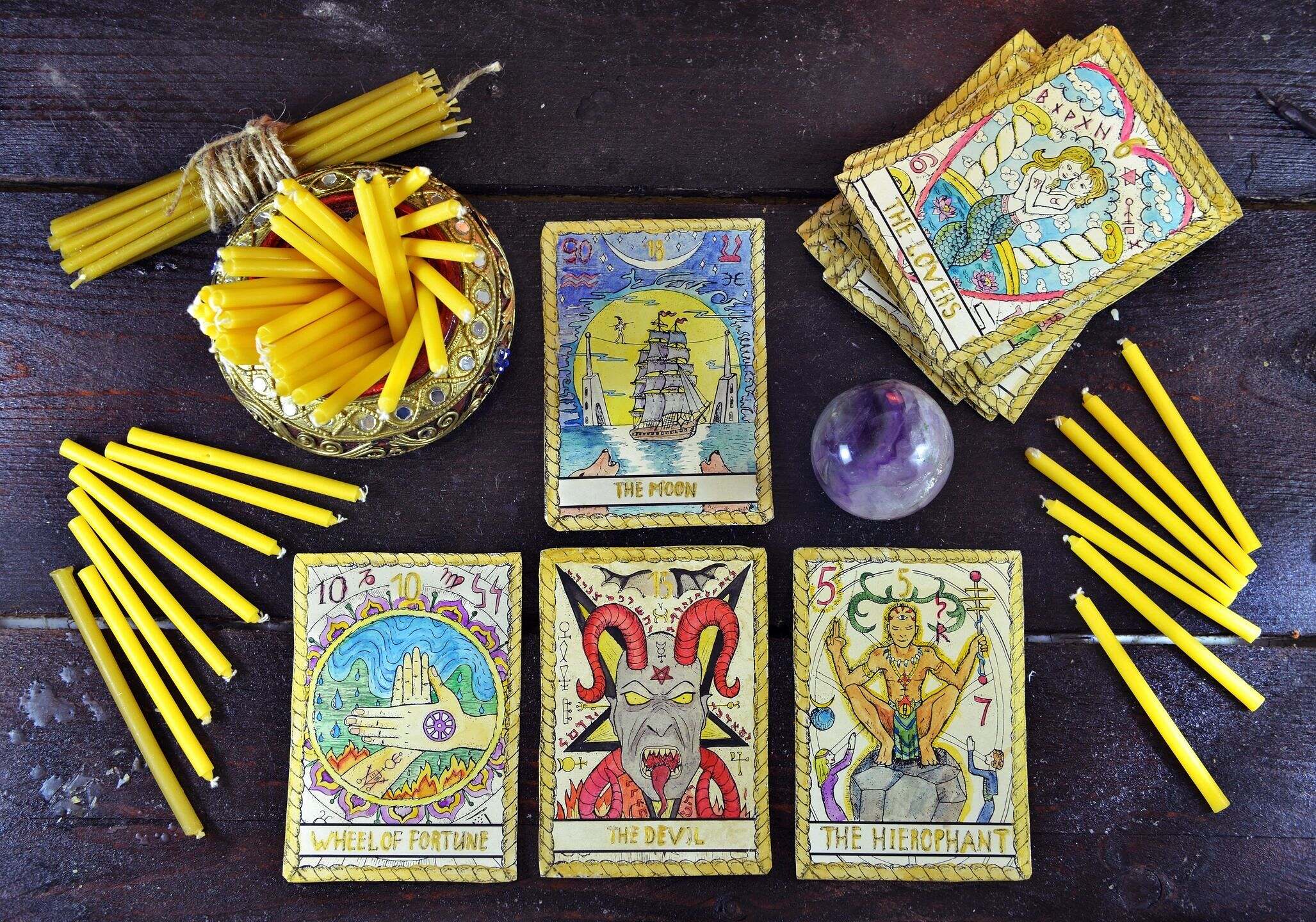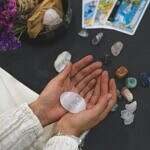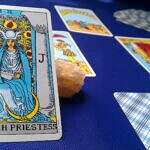Your cart is currently empty!

Cards to Divination
The transition from playing cards to tools for divination occurred gradually over centuries. Though Tarot cards had scattered references in fortune-telling from the 16th century, they gained mystical significance in the 18th century. Antoine Court de Gebelin, a French scholar, speculated that the Tarot deck held ancient Egyptian secrets and symbolic wisdom. His writings, particularly in his book “Monde Primitif,” popularized the idea that the Tarot was a repository of hidden knowledge waiting to be deciphered.
Twentieth Century Renaissance
The 20th century witnessed a renaissance of Tarot, spearheaded by authors like Edward Waite and artists like Pamela Colman Smith. Their collaboration resulted in the Rider-Waite-Smith Tarot deck, published in 1910, which became the standard for modern Tarot interpretation. This deck’s rich symbolism and intuitive imagery made it accessible to a wider audience, cementing Tarot’s place as a powerful tool for self-reflection, guidance, and spiritual insight.
Today, Tarot continues to captivate and inspire people worldwide. Whether used for personal reflection, guidance, or divination, Tarot cards offer a unique window into the human psyche and the mysteries of the universe.
Word Origin
Scholars debate whether the word “Tarot” originated from Egypt, Hebrew, or Latin as an anagram. Well, historical finds imply it comes from the first word “tarocchi” which is plural; or “tarocco” which is singular for the game of triumphs or trumps 100 years after the first deck emerged. No one really knows why the word Tarot appeared, but they do know the Germans called the deck tarok and the French Tarot.
Chinese Origins
While we can trace the origins of Tarot back to 15th-century Italy, it’s also worth noting that other cultures, including China, had early roots in playing cards. In the 12th century, the Chinese created playing cards primarily for entertainment purposes. These early Chinese playing cards were believed to have been used to entertain the concubines of Chinese kings.
The Chinese playing cards were likely made from paper, which the Chinese had invented centuries earlier. This connection between playing cards and paper production suggests a practical purpose for their creation, namely, to provide entertainment and leisure activities for the royal court.
The Chinese playing cards provide an intriguing parallel to the development of Tarot, highlighting the universal human impulse to create games and diversions while also hinting at the potential for deeper spiritual and symbolic interpretations. While the specifics of the Chinese playing cards differ from the Tarot, their shared lineage underscores the cultural significance of playing cards as both a form of entertainment and a source of inspiration and intrigue.
Italian Origins
Card Game
The Tarot cards were used to play a new card game at that time called “Triumphs”. It was similar to bridge with the 22 cards without suits serving as the “trump” cards. The trump cards out ranked the other cards in the deck. This card game was extremely popular among the ruling and upper classes in Italy; spreading quickly through Northern Italy to the East of France. As time ensued the card game spread to Northern Sicily, Austria, Germany and the lower geographically countries.
When we think of Tarot cards today, we often associate them with the occult, mysticism, and divination. However, their origins are quite different. The earliest Tarot cards were actually created as playing cards for a game. In the 15th century, between 1420 and 1440, in Italy, the Tarot deck emerged as a set of cards primarily used for entertainment among the Italian nobility. Elaborately hand-painted, these early decks, like the Visconti Trumps, featured symbolic pictures representing subjects such as the Pope, the Emperor, the Wheel of Fortune, the Devil, and the Moon.
Triumphs
In 1425, an Italian manuscript documented the earliest reference to Tarot, marking the start of its transformation into powerful tools for spiritual exploration.
The 22 cards that we now know as the “Major Arcana” were part of these early decks and served as trump cards in a game called “Triumphs.” Similar to bridge, Triumphs involved using the trump cards to outrank the other cards in the deck. This card game gained popularity among the ruling and upper classes in Italy. And thus quickly spread to other parts of Europe.
1450-1470 Sermon
The first detailed reference of the Trump cards of the Tarot was in a sermon. It was given by a Franciscan friar between 1450 and 1470 who states the Trumps were devised by the Devil himself. The use of The card was condemned, and the Devil is credited with the final triumph of the trumps. He contended that the Devil wins through the loss of souls in the card game.
Poetry Influence
Interestingly, in the 16th century, Tarot cards began to be used for creative purposes beyond gaming. Poets composed verses inspired by the titles of the Trump cards, often crafting flattering descriptions of individuals in the court. This artistic use of Tarot cards foreshadowed their later association with divination and spiritual insight.
There is evidence however that in the 16th century the Tarot was used to compose poems in which personality characteristic descriptions were taken from the Tarot. Poets would use the titles of the trump cards to create flattering verses to describe the ladies in the court. In one specific case in 1572 a poem related to a person’s fate. It is noted that the use of the Tarot cards for divination purposes dates back to 1750 where the divinatory meanings and uses of that deck was completely different from what it is used today.
Although a case in 1589 implied witchcraft and Tarot card use, no other written evidence of its occult use exists until the 18th century. It wasn’t until the 18th century that people truly viewed Tarot as having mystical and spiritual/occult meanings.
Egyptian Secrets
This notion gained further traction in 1781 when Antoine Court de Gébelin, along with other scholars and occultists, associated the Tarot with ancient Egyptian symbolism and religious concepts. They claimed that the word “Tarot” itself derived from Egyptian roots, signifying a “royal road to wisdom.” Despite later Egyptologists finding little evidence to support these claims. The association between Tarot and Egypt persisted, contributing to the mystique surrounding the cards.
Antoine Court de Gebelin in the 18th century in France became convinced that the Tarot deck had a connection to Egypt based on its picture symbolism. In his book “Monde Primitif,” he alluded to the fact that the pictures in the Tarot came from ancient books not burned in Egypt. He also felt that there were secrets to decode in those pictures. Soon after everyone was viewing the Tarot as a card system deep with hidden meanings.
Antoine Court de Gébelin
‘Thoth,’ also called Hermes Trismegistus, reignited interest in the secret history of the Tarot. Modern occult Tarot began in 1781 when the same Swiss clergymen and Freemason Antoine Court de Gébelin, published a speculative study “Le Monde Primitif”. In this he included the religious symbolism of the Tarot. He wrote that the symbolism of the Tarot de Marseille contained symbols representing Isis and Thoth.
The word Tarot came from the Egyptian word “Tar” meaning royal and “Ro” meaning road. He concluded that the Tarot was meant as the royal road to wisdom. It was his belief that it was indeed the gypsies who were descendants from Egypt who used the cards for divination first. As a result this nomadic group to introduced the cards to Europe. Although the later Egyptologists could not find anything to substantiate this it has remained solid as part of the Tarot legacy.
Hebrew Mysticism
In the 19th century, figures like Eliphas Levi deepened the esoteric connections of Tarot. Levi linked it with Hebrew mysticism, or Kabbalah. The fusion of Tarot symbolism with Kabbalistic teachings unified card interpretation and bolstered their role in spiritual exploration and divination.
In 1781 le Comte de Mellet wrote a short article on Tarot published in Court de Gébelin Le Monde Primitif. He was the first to write that there was a connection between Hebrew letters and the cards.
In the 19 century the famous occultist Eliphas Levi developed a relationship between the Kabbalah and the Tarot. People refer to the Kabbalah as Hebrew mysticism. Now, this fueled the idea that the Tarot originated in Israel and contained the wisdom of the Tree of Life from the Kabbalah. This idea brought the 78 cards together into a uniform key to the mysteries. The Hermetic Order of the Golden Dawn passed this on to the English-speaking world. The Theosophical Society, the Hermetic Order of the Golden Dawn, the Rosicrucians, the Church of Light, and the Builders of the Adytum (B.O.T.A.) all secured the Tarot’s position in the 19th and 20th centuries as a viable form of divination.
The History of Tarot is Complex
Reflecting on the rich history of Tarot reminds us of its enduring appeal. The timeless quest for knowledge and understanding. While Chinese and Italian playing cards developed independently, they both share a common ancestry in card game history. Both sets of cards served as recreational tools. Long before evolving into more complex systems with symbolic meanings and divinatory purposes.
The story of Tarot is a testament to the human desire for meaning and symbolism. Across cultures and centuries, Tarot has evolved from a simple game into a profound system of divination and spiritual exploration. Thus offering guidance and inspiration to all who seek it. The evolution of Tarot reflects humanity’s enduring fascination with mystery, symbolism, and the quest for deeper understanding.






